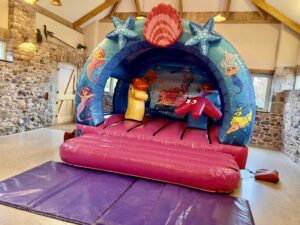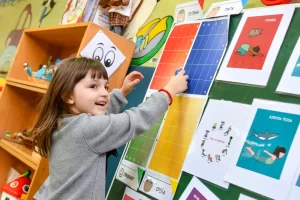Six Important Toy Safety Tips All Parents Should Know

Introduction
In today’s world, where an abundance of toys floods the market, ensuring the safety of our children is paramount. Every year, numerous children are injured due to unsafe toys, causing distress and concern among parents and caregivers. However, with vigilance and awareness, these accidents can be prevented. In this comprehensive guide, we will outline six essential tips that every parent should know to safeguard their children from potential toy-related hazards.
1. Research and Choose Age-Appropriate Toys
The age recommendation labeled on a toy is not just a suggestion; it’s a crucial safety measure. Toys are designed with specific age groups in mind, considering factors such as developmental milestones, physical abilities, and potential hazards. When selecting toys for your child, always adhere to the age recommendations provided by the manufacturer. For infants and toddlers, opt for toys that are free of small parts and choking hazards. Additionally, consider toys that promote sensory exploration and motor skill development. As children grow older, introduce toys that stimulate cognitive abilities and encourage imaginative play. By choosing age-appropriate toys, you minimize the risk of accidents and ensure that your child derives maximum benefit from playtime.
2. Inspect for Quality and Durability
Not all toys are created equal, and quality varies significantly among different brands and manufacturers. Before purchasing a toy, carefully inspect it for any signs of poor craftsmanship, sharp edges, or loose parts that could pose a safety hazard. Ensure that the toy is made from non-toxic materials and has undergone rigorous safety testing. Look for reputable brands with a history of producing high-quality, durable toys that withstand rough play. While it may be tempting to opt for cheaper alternatives, investing in well-made toys can prevent accidents and save you money in the long run. Remember, the safety and well-being of your child should always take precedence over cost considerations.
3. Check for Potential Hazards
Even seemingly harmless toys can harbor hidden dangers if not properly scrutinized. Take the time to examine toys for potential hazards such as small parts, sharp edges, protruding wires, and toxic substances. Be particularly cautious with toys that contain magnets, batteries, or small components that could be swallowed or become lodged in a child’s throat. Avoid toys with strings or cords longer than 12 inches, as they pose a strangulation risk. Additionally, be wary of toys that emit loud noises or produce excessive heat, as they may cause auditory or thermal injuries. Regularly inspect toys for wear and tear, and promptly discard any items that are broken or damaged beyond repair. By staying vigilant and proactive, you can create a safer environment for your child to play and explore.
4. Supervise Playtime
While toys are essential for childhood development, they should never be used as a substitute for parental supervision. Accidents can happen in the blink of an eye, especially when young children are left unattended with toys. Whenever your child is playing, actively supervise their activities and intervene if you notice any unsafe behavior or situations. Encourage cooperative play and teach your child to share and take turns with toys to prevent conflicts and injuries. Keep hazardous items such as small toys, sharp objects, and choking hazards out of reach, and designate a designated play area that is free from potential dangers. By maintaining a watchful eye and actively engaging with your child during playtime, you can minimize the risk of accidents and foster a safe and nurturing environment.
5. Educate Your Child About Toy Safety
Empowering your child with knowledge about toy safety is an essential aspect of injury prevention. Teach your child about the importance of following safety guidelines and demonstrate how to use toys properly. Show them how to assemble and play with toys according to the manufacturer’s instructions, and emphasize the significance of sharing and playing cooperatively with others. Teach older children about potential hazards such as choking, strangulation, and electrical injuries, and encourage them to alert you if they encounter any unsafe toys or situations. By instilling good safety habits from a young age, you empower your child to make informed decisions and protect themselves from harm.
6. Stay Informed and Advocacy
In an ever-evolving marketplace, staying informed about toy safety standards and regulations is crucial for parents and caregivers. Keep abreast of product recalls, safety alerts, and consumer advocacy initiatives to ensure that the toys you purchase meet the highest safety standards. Familiarize yourself with organizations such as the Consumer Product Safety Commission (CPSC) and Safe Kids Worldwide, which provide valuable resources and information on toy safety. Advocate for stronger regulations and stricter enforcement of toy safety standards to hold manufacturers accountable and protect children from preventable injuries. By staying informed and actively engaging in advocacy efforts, you can contribute to creating a safer environment for children to learn, play, and grow.
Conclusion
As parents, ensuring the safety and well-being of our children is our top priority. By following these six important toy safety tips, you can minimize the risk of accidents and injuries and create a safer environment for your child to thrive. Remember to research and choose age-appropriate toys, inspect for quality and durability, check for potential hazards, supervise playtime, educate your child about toy safety, and stay informed and advocacy. Together, we can work towards preventing toy-related injuries and fostering a culture of safety and responsibility in our communities.






